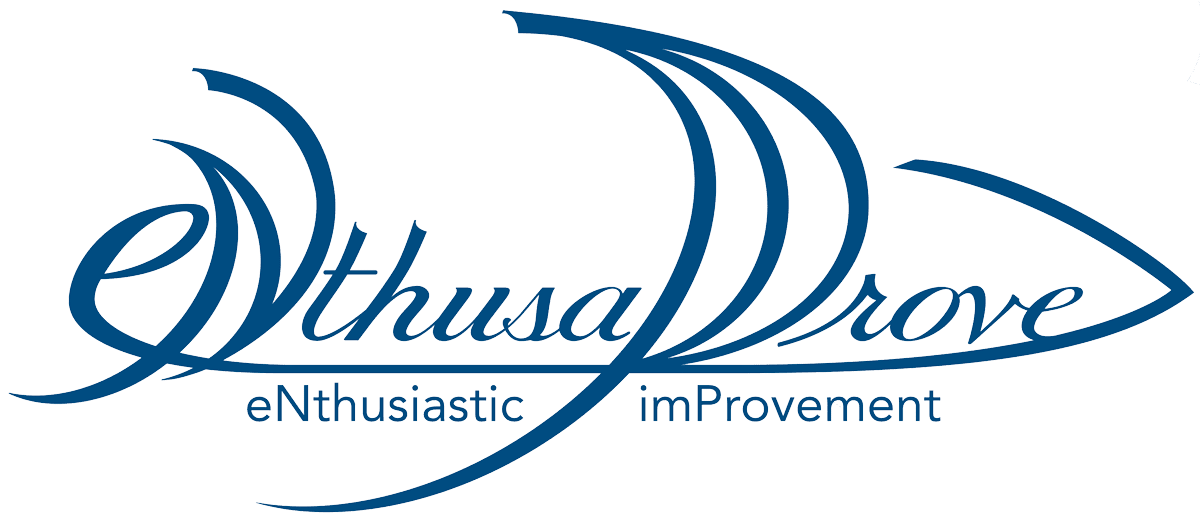 Enabling Joy is a force multiplier INGREDIENT for great results in work and in every part of our lives. Happiness is an emotional response to those great results, a fleeting feeling.
Enabling Joy is a force multiplier INGREDIENT for great results in work and in every part of our lives. Happiness is an emotional response to those great results, a fleeting feeling.
Our job as leaders is to enable joy. When we do that, we unleash the power of the human spirit. This distinguishes happiness from joy. Happiness is a good feeling, but joy is deeper. Joy is the deep satisfaction of making a difference, of a job well done, etc. Too many of us work on making people happy, rather than enabling them to have joy in work. Then we have teams addicted to the quick emotional response vice the true joy of doing meaningful, challenging work.
Joy is a constant, not a result
A friend of mine from church recently suggested that I would enjoy a video of a speech from Matthew McConaughey. When she sent the link, I was puzzled. Mr. McConaughey’s talk is an easy to appreciate unpacking of the power of joy and the need for an attitude of gratitude. He elegantly explains that while happiness is “result reliant”, “joy is something else, it’s not a response to some result, it’s a constant.” I would put it that joy is an outlook, happiness is a resulting feeling.
We (Paul and Amanda) like to think of joy more as a constant force multiplier. In order to pursue purpose with passion, we need to put in some amount (say X) of effort. Joy is the multiplier for that amount X. What does that mean? It means that for the same X amount of effort, when we enable joy, we will get a multiplied increase in pursuit of purpose and passion. Sounds like a commercial: That for the same calories of effort, joy will enable an increase in the pursuit of purpose. In the video, Mr. McConaughey speaks about how that multiplier played out in his acting career.
Joy Builds on Joy
The term joy seems to be getting more airtime recently, maybe because of books like Marie Kondo’s sensation for decluttering our lives, Spark Joy. Even while decluttering your life is valuable to your workspaces as well as your home (hello, 5S strategies in lean six sigma!), even this can confuse happiness and joy. The process of cleaning out a workspace to make it more efficient is painful, hard, and time consuming. That’s why so many times we don’t do it. When we actually complete the work of bringing order from chaos, we have satisfaction in a job well done. Then as we improve how we work to keep the organization and flow, we are enabled to create further joy by completing more meaningful value USING the workspace we’ve organized. This is the multiplying effect of enabling joy in work. Joy builds on joy.
The Opposite of Joy
If you are not enabling joy, building joy on joy, then what?? It turns out that joy’s opposite is not unhappiness or misery…it’s fear. Dr. Deming, realizing this meaningful mental switch, began changing his advice from “drive out fear” to “enable joy” in his later years (i.e. when he was in his 80’s and 90’s yet still actively sought as a quality consultant). This is a good way to understand why joy is a force multiplier. Fear causes us to fight, flight or freeze… it doesn’t trigger creativity and response, it triggers instinct and reaction. When we as leaders enable joy, it’s about removing fear, building on strengths, connecting to vision, nurturing relationships, and opening pathways to contribute our gifts. Enabling joy is very different from enabling ‘happy.’ Enabling joy promotes meaning, promotes our passion to contribute. Conversely, happiness is a resultant. Aiming for happiness promotes wanting more of that which caused the happiness, or, our passion to consume.
In your work team, where are there frustrations that take the joy out of work? is it a physical workspace flow, virtual workflow, a communication process within your team?
You may be just coming back from vacation, kids starting school, work ramping up for the fall…stress is setting in. This can instinctively put us in a fearful frame of mind. But it doesn’t have to be that way…
Back-to-Work/School with Joy
Are you dreading the start of school, or the return to the hectic pace of work after time off?
What if we envisioned work and school differently, combating the fear with joy? If joy is the ingredient for satisfaction, we go into situations differently (not just expecting them to go differently).
Start with Gratitude
What is one thing you can be thankful for at work or at school? Can you come up with a few things? Changing your perspective even this small amount changes your approach, thinking, and performance. By focusing on the positives in a situation, you open the ability to see solutions and ideas. This shows the pathway to joy, by accomplishing something meaningful.
Conversation Starter
Listen to conversations around you. How many focus on complaints or griping? Be the one that engages others in conversations around building up good things, that express gratitude, looking for answers, asking questions to truly learn. Take note of the fruits of this type of conversation.
Investing in Ideas
Finding ways to pour in new ideas that build up (rather than get your blood boiling, like the cable news shows). Have you read a classic book lately? How about watch an engaging TED talk? Find a book to listen to on your commute or while you exercise at the gym that sparks your ideas and creates a joyful outlook. If you want a book suggestion, we have one! Enabling Joy explores the journey to discover enabling joy as the key to project success for six characters, all from very different perspectives. We hope it will get your thoughts sparking!
A Change of Viewpoint Changes the Result
Dr. Deming led a revolution in quality by equipping managers to “enable joy” vice “drive out fear.” Google found in their data-driven analysis of successful teams that building trust on a team (what they call psychological safety), was the biggest statistical indicator of team success. Intentionally building trust takes having a different outlook, looking to create joy.
The amazing part of enabling joy, is that it is not an end to itself. It is the beginning. By enabling joy, you can then multiply joy upon joy, capability on capability, satisfaction to deep satisfaction. That’s not all…(now I sound like a salesman!)… that turns out to be the best way to predict success of a project.
If you’d like deeper guidance on the leadership tools to use with your team to enable joy and engage excellence, my next book will link joy and excellence together for project team leaders. Have the opportunity to get an early copy when they are available to change your viewpoint and toolbox for leading a project that enables joy, and therefore succeeds!





